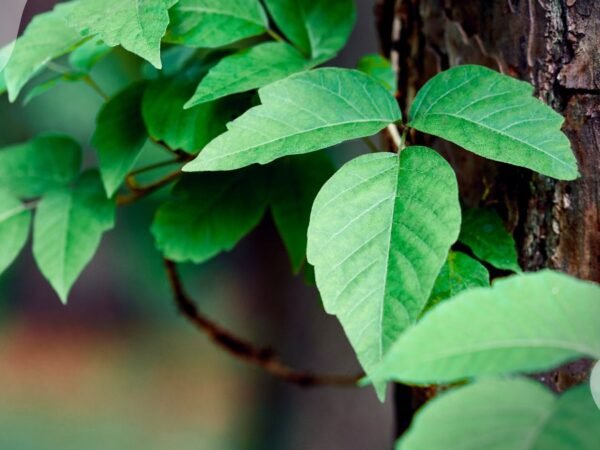Did you know that a pistachio tree can take up to 7-10 years before it starts producing its first nuts? That's quite the waiting game for those delicious green treats! But fear not, patience is key. From planting the seed to nurturing the sapling, each stage plays a crucial role in the eventual bounty of pistachios you'll enjoy. So, if you're considering growing your own pistachio tree or simply curious about their cultivation process, buckle up for an enlightening journey through the timeline of a pistachio tree's production cycle.
Key Takeaways
- Act on Timing: Understanding the growth timeline of pistachio trees is crucial for anticipating when they will start producing nuts.
- Optimize Growing Conditions: Providing essential conditions like well-drained soil, sunlight, and proper irrigation can significantly impact the productivity of pistachio trees.
- Follow Best Practices: Adhering to cultivation practices such as pruning, fertilizing, and pest control can help ensure healthy tree growth and abundant nut production.
- Explore Propagation Methods: Learning about propagating pistachio trees through grafting or planting from seeds can expand your cultivation opportunities.
- Address Challenges Proactively: Being prepared to manage issues like diseases, pests, and environmental stressors can safeguard your pistachio tree's development.
- Maximize Harvest Benefits: Efficient harvesting techniques and proper storage methods are vital for preserving the quality and flavor of pistachio nuts.
Understanding Pistachios
Origin
Pistachio trees have a rich history originating in the Middle East and being cultivated for thousands of years. Ancient civilizations like the Greeks and Romans cherished pistachios as a delicious treat. The cultivation of pistachio trees dates back to ancient times, showcasing their enduring popularity.
The two main types of pistachio trees are male and female. Female trees bear the nuts that we enjoy eating, while male trees play a crucial role by providing pollen for pollination. Some popular cultivars of pistachio trees include Kerman, Peters, and Lost Hills. These varieties offer different flavors and sizes of pistachios for consumers to enjoy.
Pistachio Tree Growth Timeline
Planting Seeds
Pistachio seeds need to be soaked in water for 24 hours before planting. Once soaked, plant them in well-draining soil with ample sunlight exposure. After planting, it takes approximately 7 to 10 days for the seeds to start germinating. This initial stage is crucial as it sets the foundation for the tree's growth.
To successfully grow a pistachio tree, you must ensure that the seeds are given proper care and attention during their germination period. Providing adequate water and sunlight will help facilitate healthy growth from seedling to sapling.
First Harvest
The journey from planting pistachio seeds to harvesting your first crop requires patience and dedication. Typically, a pistachio tree takes about 5 to 7 years before it produces its first harvest of nuts. During this time, the tree focuses on establishing a robust root system essential for supporting fruit-bearing branches.
Waiting for your first batch of pistachios can be an exercise in patience but reaps delicious rewards once they are ready for harvest. Understanding that good things take time is pivotal when cultivating pistachios – nurturing the tree through its early years ensures bountiful yields later on.
Essential Conditions for Growth
Climate
Pistachio trees need specific conditions to grow successfully. They thrive in hot and dry climates with long, hot summers and mild winters. These trees do best in Mediterranean-type climates where the weather is ideal for their cultivation. The right climate plays a crucial role in determining how quickly a pistachio tree can produce.
In addition to climate, soil quality is vital for pistachio tree growth. These trees prefer sandy or loamy soil that has good drainage capabilities. It's essential that the soil pH falls between 7.0 and 8.0 to support optimal growth conditions for pistachios. Before planting, conducting a soil test helps ensure that all necessary nutrients are present for healthy tree development.
Soil Requirements
Pistachio trees have moderate requirements but need deep watering spaced out over time rather than frequent shallow watering sessions. Deep watering encourages root growth while preventing water-related issues like root rot.
Cultivation Practices
Fertilizing
Pistachio trees require nutrient-rich soil to thrive and produce abundant fruits. To support tree health, apply a balanced fertilizer during the growing season. Nitrogen is crucial for foliage growth, while phosphorus plays a vital role in promoting flower and fruit development. It's important to follow the recommended dosage provided on the fertilizer packaging to prevent over-fertilization, which can harm the tree.
When fertilizing your pistachio tree, consider using organic options like compost or well-rotted manure as they provide slow-release nutrients that are beneficial for long-term tree health. Incorporating mulch around the base of the tree helps retain moisture in the soil and provides a steady supply of nutrients as it decomposes.
- Pros: Promotes healthy growth and fruit development.
- Cons: Over-fertilization can damage the tree.
Pruning Techniques
Pruning is an essential practice for maintaining pistachio trees' health and productivity. During the dormant season, prune your pistachio trees to remove dead or diseased branches that could harbor pests or diseases. By opening up the canopy through pruning, you allow sunlight penetration into lower branches, promoting better photosynthesis and overall tree vigor.
While pruning is beneficial, it's crucial not to engage in excessive cutting as this can lead to reduced fruit production due to stress on the tree. Aim for selective pruning by focusing on removing damaged or crossing branches while preserving healthy ones that contribute to fruit-bearing capacity.
- Start by inspecting your pistachio tree for any dead or diseased branches.
- Use sharp tools like pruning shears or loppers to make clean cuts close to where branches meet larger limbs.
- Thin out crowded areas within the canopy but avoid removing more than 20% of total foliage at once.
Propagating Pistachio Trees
Planting Process
Planting a pistachio tree involves selecting a sunny spot with ample space for it to flourish. Dig a hole that is both wide and deep enough to accommodate the root ball comfortably. Once the tree is positioned in the hole, fill it up with soil and water generously.
Ensuring proper sunlight exposure and adequate room for growth are crucial factors when planting pistachio trees. The depth and width of the hole play a significant role in providing a conducive environment for the tree's roots to establish themselves securely. Watering thoroughly after planting helps settle the soil around the roots, promoting initial growth.
Budding Method
When propagating pistachio trees, budding emerges as a popular technique employed by growers. This method entails grafting a bud from a desired cultivar onto a rootstock plant. By doing so, the new tree inherits specific characteristics or traits from its parent plant, ensuring desirable qualities in future harvests.
Grafting buds onto rootstocks allows growers to control which attributes their newly propagated trees will possess. This meticulous process ensures that each new pistachio tree carries forward sought-after features from established cultivars. Through budding, growers can create trees tailored to meet specific preferences or environmental conditions.
Managing Challenges
Pests and Diseases
Pistachio trees are susceptible to various pests such as aphids, mites, and navel orangeworms. These pests can harm the tree's growth and affect nut production. Diseases like Verticillium wilt and Botryosphaeria can weaken pistachio trees.
Regular monitoring of the tree is essential to detect any pest or disease issues early on. Implementing proper pest management practices, such as using insecticidal soaps for aphids or predatory insects for mites, can help control these problems effectively. By addressing these issues promptly, you can safeguard the health of your pistachio tree and ensure optimal nut yield.
-
Pros:
-
Early detection prevents severe damage.
-
Effective pest management enhances tree health.
-
Cons:
-
Neglecting monitoring may lead to reduced yields.
-
Severe infestations could require intensive treatment.
Overwintering Tips
While pistachio trees are generally hardy plants, they may need extra care in colder regions during winter months. To protect the roots from freezing temperatures, consider mulching around the base of the tree with materials like straw or wood chips. This insulation helps maintain stable soil temperature and protects the roots from frost damage.
For young pistachio trees that are more vulnerable to extreme cold weather conditions, covering them with burlap or frost blankets is advisable. These protective coverings shield the delicate branches from harsh winds and freezing temperatures, promoting healthy growth once spring arrives.
- Mulch around tree base with straw or wood chips.
- Cover young trees with burlap during freezing temperatures.
- Remove covers in spring when warmer weather returns.
Harvesting and Storing
Harvesting Time
Pistachios need time to grow before they are ready for harvesting. Typically, harvesting takes place in late summer or early fall when the nuts have fully matured. It's crucial that the shells of the pistachios have split open naturally before picking them. To harvest, gently shake the tree branches to release ripe nuts onto a catching surface below.
Timing is essential as picking pistachios too early can result in immature nuts with closed shells that are not suitable for consumption. Waiting until they are fully ripened ensures better flavor and quality in the harvested pistachios. By understanding this process, farmers can optimize their yield by gathering only mature and flavorful nuts.
Storage Methods
After harvesting, proper storage methods are vital to maintain the freshness of pistachios. The key is to keep them in a cool, dry place away from sunlight and moisture. Shelled pistachios should be stored in an airtight container at room temperature; this helps preserve their flavor for several months without compromising on taste or texture.
For long-term storage options, consider refrigerating or freezing shelled pistachios. Refrigeration slows down any potential rancidity due to their high oil content while freezing extends their shelf life even further. These methods ensure that you can enjoy your homegrown or store-bought pistachios over an extended period without losing their deliciousness.
Economic and Environmental Factors
Cost Influences
Growing pistachio trees involves various costs, such as land, labor, and water expenses. The initial investment in planting trees and maintaining equipment also impacts overall costs significantly. Moreover, market demand and competition play a crucial role in determining the selling price of pistachios.
When considering the cost influences of pistachio tree cultivation, it's essential to account for these factors to ensure profitability. For instance, high water expenses may increase production costs but can be offset by higher selling prices driven by market demand. Investing in modern equipment for maintenance can enhance efficiency and reduce labor expenses over time.
- Factors affecting costs:
- Land availability
- Labor wages
- Water scarcity or abundance
Cultivation in the U.S.
In the United States, California stands out as the primary region for commercial pistachio cultivation. Its favorable climate and soil conditions make it ideal for growing high-quality pistachios. However, other states like Arizona and New Mexico also offer suitable climates that support successful pistachio cultivation.
The U.S.'s position as one of the leading global producers of pistachios underscores its significance in meeting both domestic and international demand. This not only contributes to economic growth but also highlights the country's agricultural prowess on a global scale.
- Key points about U.S. cultivation:
- California's dominance in pistachio production
- Suitable climates beyond California
- Global impact of U.S.
Tips for Successful Cultivation
Optimal Conditions
Pistachio trees require specific conditions to thrive and produce an abundant harvest. Hot summers and mild winters are ideal for these trees, as they need the contrast between seasons to grow successfully. Full exposure to the sun is crucial for their growth and fruit development since they rely on sunlight for photosynthesis. The soil in which pistachio trees are planted should be well-draining, with a pH level ranging from 7.0 to 8.0.
Ensuring that pistachio trees receive adequate water is essential during critical stages of growth such as flowering and nut development. Proper irrigation techniques can help prevent issues like nut blanking, where nuts fail to form correctly due to inadequate pollination or water stress.
Common Problems
Despite their resilience, pistachio trees can face challenges that affect their productivity if not properly managed. Nut blanking is a common issue that arises when nuts do not develop fully, leading to reduced yields. This problem can occur due to factors such as insufficient pollination or water scarcity during crucial growth periods.
Furthermore, excessive heat during the flowering stage can result in poor fruit set in pistachio trees, impacting the overall harvest quantity and quality negatively. Another significant threat comes from nut rot caused by fungal infections; this disease affects the harvested pistachios' quality and market value if left unaddressed.
You've now uncovered the intricate journey of a pistachio tree, from its humble beginnings to the fruitful rewards it offers. By understanding the growth timeline, essential conditions, cultivation practices, and management tips, you're equipped to nurture your own pistachio grove successfully. Remember, challenges may arise, but with dedication and care, you can overcome them and savor the satisfaction of a bountiful harvest.
So, roll up your sleeves, get your hands dirty, and embark on this pistachio-growing adventure. Your efforts will not only yield delicious nuts but also contribute to a greener environment and sustainable agriculture. Happy planting!
Frequently Asked Questions
How long does it take for a pistachio tree to start producing nuts?
Pistachio trees typically begin producing nuts after about 5-7 years of growth. Once mature, they can yield abundant harvests for many decades.
What are the essential conditions required for growing healthy pistachio trees?
Healthy pistachio tree growth requires full sun exposure, well-drained soil, and a dry climate. Adequate water during the growing season and cold winter temperatures are also crucial factors.
Can I propagate my own pistachio trees at home?
Yes, you can propagate pistachio trees through grafting or planting seeds. Grafting is a common method used by commercial growers as it ensures genetic consistency and faster fruit-bearing.
How do I overcome challenges in cultivating pistachio trees?
To manage challenges like pests and diseases, practice proper irrigation techniques, monitor tree health regularly, and apply appropriate fertilizers. Implement integrated pest management strategies to maintain tree vigor.
When is the right time to harvest and store pistachios from the tree?
Harvest ripe pistachios when their shells split open naturally. Dry them thoroughly before storing in a cool, dry place to maintain freshness and prevent mold formation. Properly stored nuts can last up to one year.
Image Source: Paid image from CANVA





